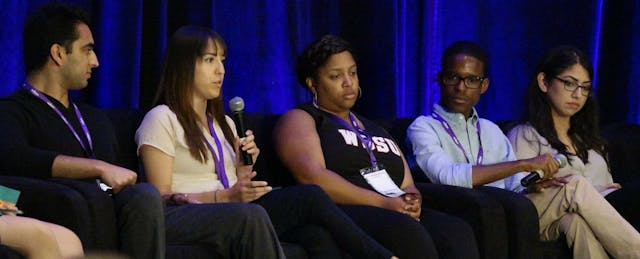A love for avocado lattes and Snapchat filters are just a few of the stereotypes following Millennials these days. But students are now pushing back on these generational generalizations, noting that assumptions regarding their attitudes, hobbies, and abilities are hurting them academically. One of the biggest misconceptions students at last week’s New Media Consortium’s Summer Conference (NMC) brought up was the idea that millennials are digital natives.
Most people have heard this story before: the eight-year-old son teaching his forty-year-old dad how to use some new device or app. However, despite being an allegory of our times, a lot has been said off-the-record about misconceptions regarding students’ technological abilities. In an interview with EdSurge, Alexandra Pickett, the Director of New York State University’s Center for Online Teaching Excellence, noted that many of her students know how to use online platforms such as Twitter and Facebook for fun, but have no idea how to leverage them for academic and professional use. It’s a point the students at NMC echoed.
“Something you can do to prep your students for college is to have one day where you host a workshop on using Google Docs,” suggested Alejandra Cervantes, a junior at UCLA, in response to a question from an educator about the best way to support high school students heading to college. “Something simple like that can be pretty instrumental in helping them succeed in classes in the future.”
Raamish Saeed, a senior from Saint Louis University, told the crowd, “We are not very tech savvy coming into college. Other than playing games and basic Microsoft office, there are many things we don't know.”
“I did not know how to use headers, footers or page number in Microsoft Word, so I got five points off every essay for an entire semester,” explained Alyssa Foley, a student at Houston Community College, in an interview with EdSurge. “I did not have Microsoft Word at home because I did not want to pay for it. I had some free office program, so even if I tried to do it, all the formatting would get messed up.”
Foley is a first generation college student, and her family is considered low-income. She eventually learned how to use Word and PowerPoint through her sister’s friend, and when asked why she didn’t seek out help from the school, she said she was deeply embarrassed about not living up to “tech-native” expectations.
A 2015 study conducted by the Pew Research Center shows students like Foley and Saeed are not alone. The report found that in the United States about five million homes (17.5%) with school-age children did not have access to the internet. Out of those with access, many homes did not have laptops or computers as students often used smartphones for internet connections. For classrooms that expect students to collaborate online and write long essays, lacking these resources puts them at an academic disadvantage.
Students say that in order for high schools and colleges to better serve them, it is important to challenge the assumption that students are digital natives. This starts with educating professors about the technological diversity in their classrooms and providing students with workshops and engaging videos to help them learn without shame. Foley suggests schools offer free access to common software programs, noting that program costs are high and many students do not have the funds to access them.
“Just being able to access programs like Adobe Suite can help us to learn the technology,” says Foley. “Those are programs I will use in my field, so I need to know it.”
Need help teaching students tech basics?
Audrey Mullen, an incoming junior at Presentation High School and an editorial intern at EdSurge, has put this together this set of videos to help familiarize teachers with commonly used tools in the classroom. Here are a few to:
Help students get started with Google Docs;
Teach students how to add headers and footers in Microsoft Word;
and ten steps to start using Photoshop.


